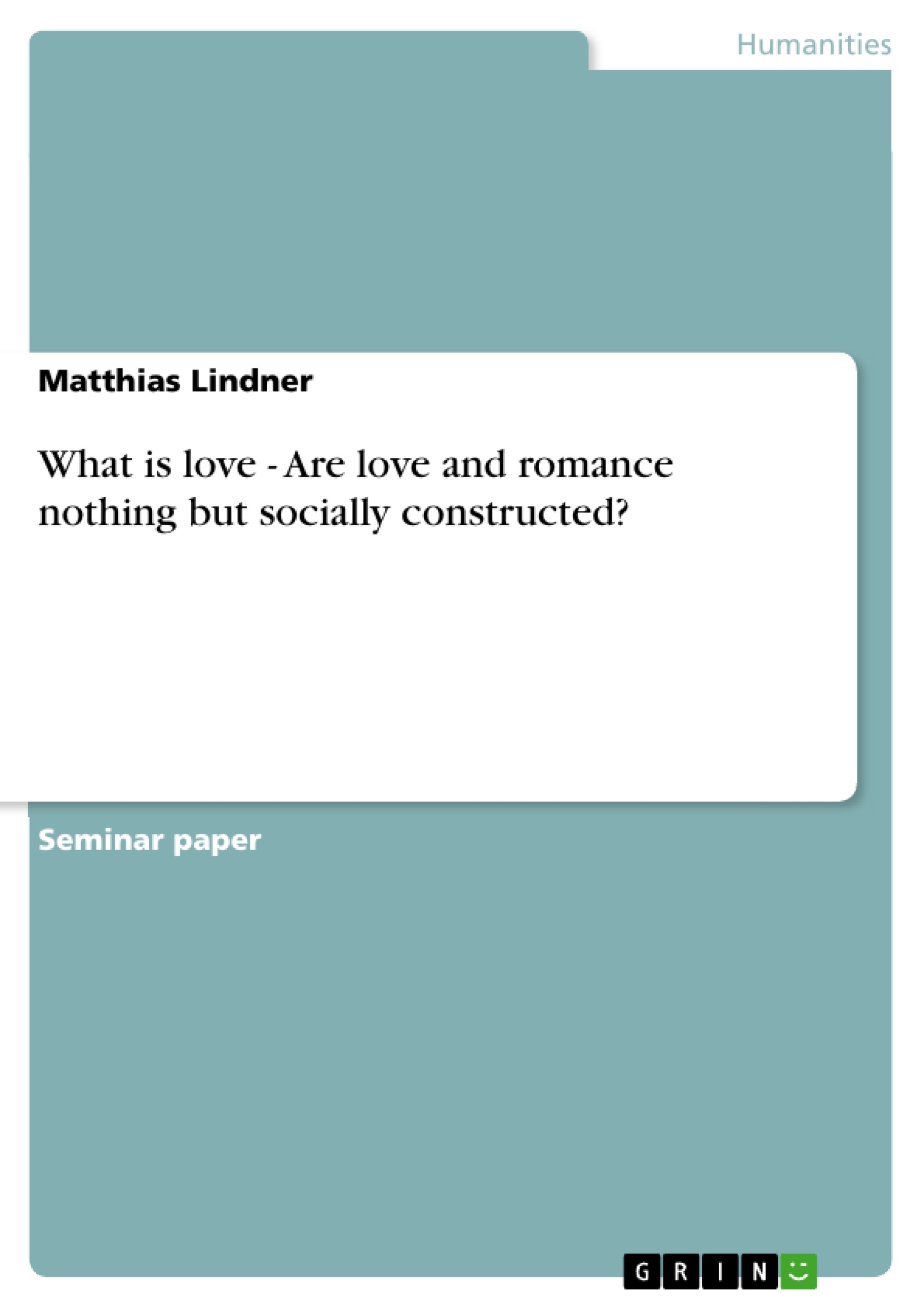Love is nothing, but without love everything is nothing.
What is this feeling, what makes the hardest men cry, and women get crazy? Mostly love is considered as something unexplainable. Let us try to change that.
Maybe you would think: Hey, how unromantic does he has to be, to think that he could explain love? Let me say this: I trust in love and I am assured certainly able to say that I am really romantic. To write about love, you need a childlike believe in love, but on the other hand an emotionless perspective about it.
This paper is not eligible for explaining every secret, characteristic or anomaly of love and romance, it wants to give a survey about what love is and on what love depends. The theory based upon the arguments of Berger and Luckmann, that reality is socially constructed by society1, whic h seems to me to be really close to reality, not in all points, but in a lot of. In respect of this theory an unexplainable thing like love could not exist. So let us try to make love explainable, because otherwise a beautiful thing like love could not exist. And even if it is only in a theory this would be a pity, wouldn’t it?
Table of Contents
- INTRODUCTION.
- LOVE IS NOTHING, BUT WITHOUT LOVE EVERYTHING IS NOTHING..
- THE SHOW OF LOVE.
- ROMANCE..
- Love....
- RELATIONSHIP..
- GROWING LOVE
- THE BIOLOGY OF LOVE.
- BIOLOGICAL REACTIONS..
- BIOLOGICAL HERITAGE..
- SEXUALITY....
- LOVE AS AN ATTEMPT..
- INDIVIDUALIZE MY WORLD..
- WANTINGS..
- EGOISTIC LOVE..
- SUCCESSFUL RELATIONS
- CONCLUSION.
- SHOULD THIS KNOWLEDGE CHANGE OUR BEHAVIOR?..
- BIBLIOGRAPHIC SOURCES..
- COMPENDUM..
Objectives and Key Themes
This paper explores the concept of love and romance, examining whether they are merely social constructs. It aims to provide a comprehensive overview of love, its various aspects, and its dependence on social factors. Drawing on the theory of Berger and Luckmann, the paper argues that love, though seemingly inexplicable, can be understood through the lens of social construction.
- The social construction of love and romance.
- The influence of societal norms and cultural practices on the expression and experience of love.
- The biological and psychological dimensions of love, including its evolutionary roots and hormonal influences.
- The concept of love as an attempt to individualize one's world and fulfill personal desires.
- The various phases and complexities of love, from infatuation to committed relationships.
Chapter Summaries
- Introduction: This chapter introduces the topic of love and its often perceived inexplicability. It sets the stage for the paper's exploration of love through the framework of social construction theory.
- The Show of Love: This chapter investigates how love and romance are portrayed and experienced in contemporary society. It analyzes a survey conducted among Zeppelin University students regarding their perspectives on love and romanticism.
- Romance: This chapter examines the concept of romance, drawing on the work of Eva Illouz. It explores the key elements that contribute to creating a romantic moment, including time, emotion, space, and simulation. The chapter discusses how romantic ideals have evolved over time, highlighting the influence of social and economic factors.
- Love: This chapter delves into the multifaceted nature of love, exploring its connection to extremes of both fight and repression, delight and pain. It highlights the subjective nature of love and its potential for both fulfillment and suffering.
- Growing Love: This chapter examines the different phases of love, particularly the transition from infatuation to a more mature and enduring form of love. It explores the role of obstacles and experiences in shaping love's development.
Keywords
The central keywords and focus topics of this paper are: love, romance, social construction, Berger and Luckmann, Eva Illouz, Niklas Luhmann, cultural influence, biological factors, psychological aspects, individualization, desire, phases of love, relationship, and romanticism.
- Quote paper
- Matthias Lindner (Author), 2005, What is love - Are love and romance nothing but socially constructed?, Munich, GRIN Verlag, https://www.grin.com/document/40387




